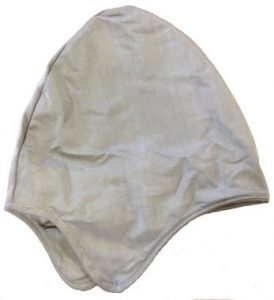The Faraday cap can be described as an EMF protection hat which blocks radio waves from reaching to your brain. It's a helmet made of tinfoil which is typically used by people suffering from EMF hypersensitivity (EHS).
Tin foil hats function as a Faraday cage an enclosure that protects its interior from electromagnetic charges and electromagnetic radiation by spreading them out around the outside inside the cage.
How faraday cage hat can be described as a metal object that functions like an electric conductor. If an electrical charge is brought in proximity to it the free electrons within the material immediately align themselves, and cancel out the field that is incoming.

The efficiency of a Faraday cage depends on its design, size and construction materials. They also need to be easily groundable, with seams and gaps that are minimized.
The best Faraday cages can block static electric charges as well as electromagnetic waves, securing scientists who run sensitive experiments that are affected by radiation. MRI scanning rooms, for instance, have to be Faraday caged to keep external waves from interfering with the imaging process for diagnostic purposes.
Despite their amazing efficacy, Faraday cages can be perfect. Electrons are still able to penetrate a Faraday cage and cause damage to electronics within it. This is why they're often used in high-powered labs to cut down on noise and interference. They can also help defend from electromagnetic pulses (EMPs) which are weapons with high energy that aim to neutralize electronic equipment.
The way Faraday Fabric Works
If it's radio waves Wi-Fi, cell towers or any other source of electromagnetic energy, the interference could cause the connection to be unstable and disrupt the operation of devices. This is why many vital components are wrapped in protective materials such as copper foil to shield them.
But, these cages made of metal aren't the most comfortable and easy to maneuver. Researchers at Drexel University have developed a Faraday fabric that is flexible durable, washable and tough.
The fabric is a 2D material called MXene and can block virtually all electromagnetic radiation. In the future, clothes that are made with this technology can be used to shield wearables from interference , as well as people from radiation that could be harmful to them.
While this technology is still in the process of development, it's an exciting concept for clothing. The team is hoping that this new fabric will lead to clothing that have RF-blocking pockets. read more could be beneficial for people who want to keep their gadgets away from their eyes while using them. This would also help prevent the most common health issue that is brain tumors caused by radiation.
Faraday Cages Versus Faraday Fabric
If you're not familiar with Faraday cages Here's how they function: When electromagnetic fields are brought into contact with metal conductors like aluminum mesh this creates negative and positive particles to split. Learn here of charges eliminates any electromagnetic waves that come in.
It's this method that allows utility workers to work near power lines without worry of getting electrocuted. This helps to keep military equipment and telecommunication devices free of interference.
However, Faraday cages can be expensive, and aren't ideal for everyday use. That's where Faraday fabric comes in.
Faraday Fabric Versus Tin Foil
If you've ever heard of Faraday cages, you know that they're little more than an all-encompassing conductor that swerves electromagnetic radiation before it gets to sensitive electrical components contained within. This kind of shielding can also be found in elevators, scan rooms that MRI machines sit inside, "booster bags" that shoplifters can use to avoid security tags that are electronic and even within your microwave oven at home.
Can a tin-foil cap really be considered a Faraday cage?
To block completely radio waves the Faraday cage should be sealed and fully enclosed.
But a tin foil hat doesn't have the space for that, which is why it only partially blocks radiation.
In addition, tin foil hats can amplify radio signals. They supposedly do this by using resonance.
